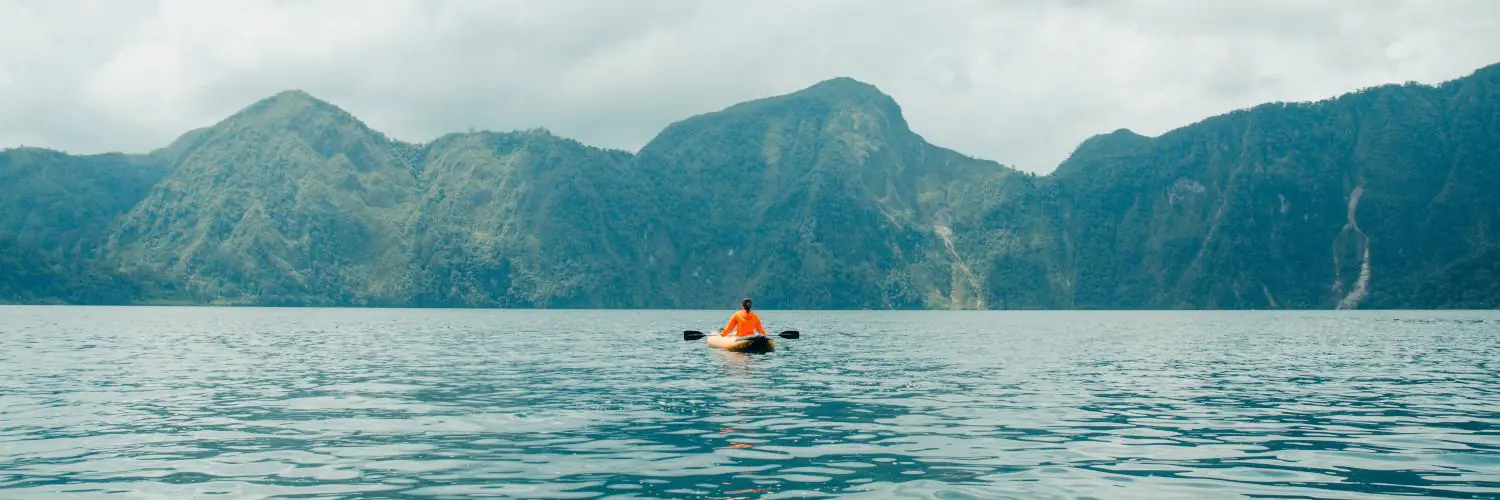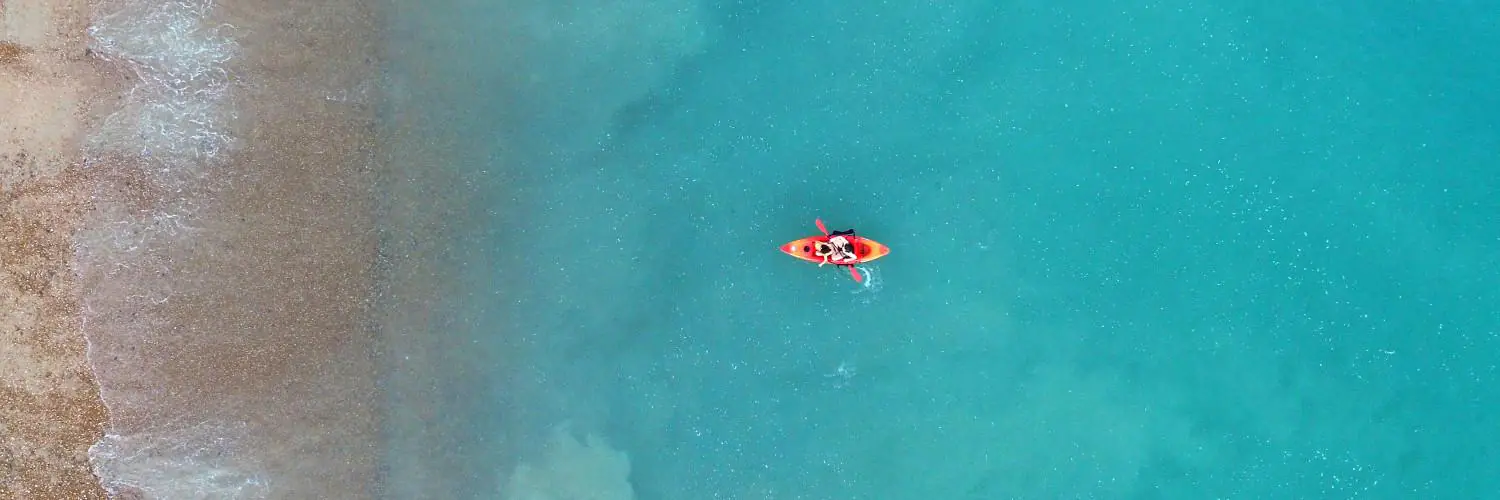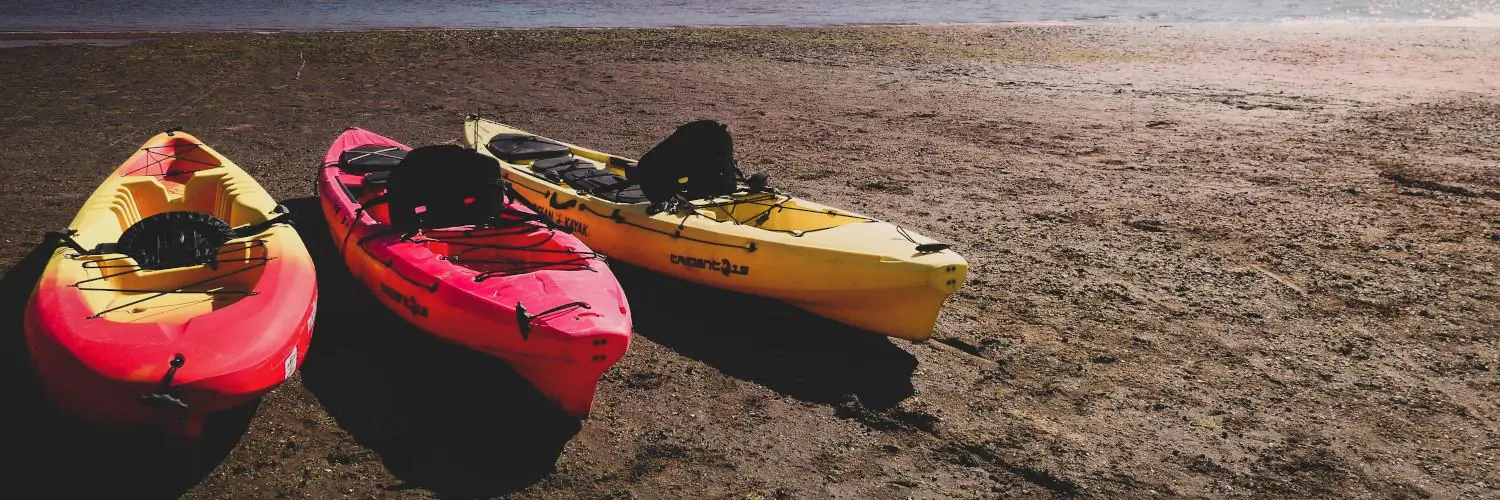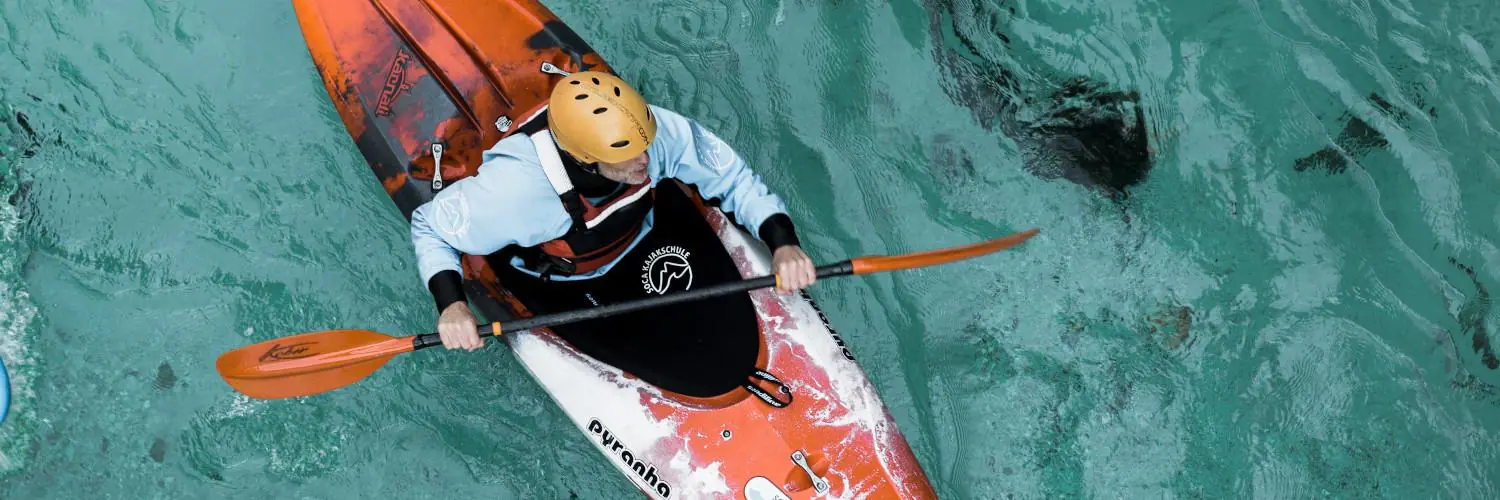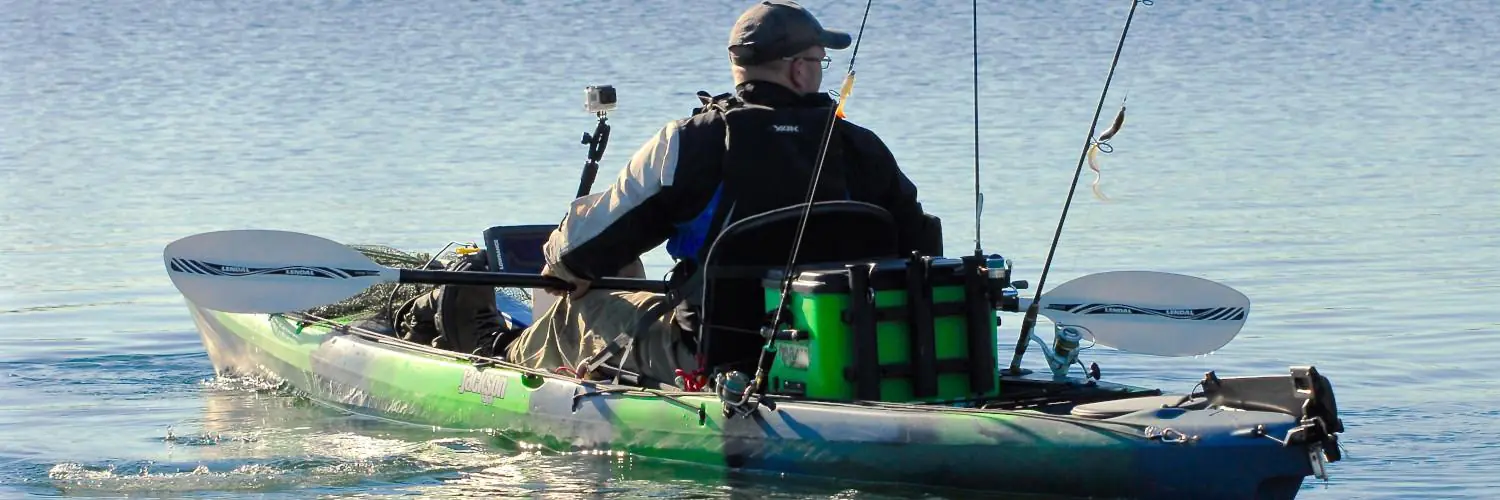Kayak anglers often seek stable positioning to enhance their fishing experience. A kayak anchor pole, commonly referred to as a stake-out pole, serves as a crucial tool for maintaining a kayak’s position in shallow waters, allowing anglers to fish in a targeted area without being moved by wind or current. These anchor poles usually range in length and are constructed from various materials, designed to be lightweight yet sturdy enough to hold a kayak in place.
Ease of use and quick deployment characterize the effectiveness of kayak anchor poles in the kayak fishing community. The system usually comprises a pole coupled with a securing mechanism, like a trolley system, which facilitates smooth anchoring. Anglers appreciate the convenience of stopping precisely where they desire without the cumbersome process associated with traditional anchoring techniques.
The integration of kayak anchor systems has revolutionized kayak fishing, offering anglers the motor-powered convenience observed in larger bass boats in a compact form suitable for kayaks. The convenience of an on-board, self-contained battery and motor that some advanced anchor poles come equipped with further enhances their usability, ensuring a seamless fishing experience.
Table of Contents
Understanding Kayak Anchoring Fundamentals
When kayakers venture out onto the water, a reliable anchor system is crucial for maintaining stability during activities like fishing, photography, or relaxing. There are several key components to a robust kayak anchoring system that enthusiasts should be familiar with.
Anchor Types: Kayak anchors come in various shapes and sizes suitable for different environments. The grapnel anchor, often made of stainless steel, is popular for its foldable flukes that grip rocky and weeded bottoms effectively. The mushroom anchor is better suited for muddy environments due to its rounded shape and weight.
Anchor Weight and Materials: A common anchor weight for kayaks ranges from 1.5 to 3.5 pounds, balancing hold strength with portability. Materials such as galvanized or stainless steel and fiberglass offer durability and corrosion resistance.
Anchor Trolley: This system allows kayakers to change the anchor point location along the side of the kayak, giving them the flexibility to adjust to wind and current changes.
Rope and Knots: Nylon is a preferred material for anchor ropes due to its strength and resistance to rot. The length of the rope should be approximately seven to ten times the depth of the water to ensure proper angling and hold.
| Factors to Consider | Description |
|---|---|
| Safety | Always prioritize safety by ensuring the anchor system does not impede exits in emergencies. |
| Convenience | Choose an anchor that’s easy to deploy and retrieve. |
| Compatibility | Select an anchor compatible with your kayak’s design and the waters you’ll be exploring. |
When anchoring a kayak, choosing an anchor with the right weight and design for the conditions, securing it with durable rope, and using an anchor trolley for adaptability are all hallmarks of a secure anchoring system. Always consider the kayak’s size, the water’s depth, and bottom composition when selecting an anchor.
Types of Kayak Anchors
Grapnel Anchor: Ideal for rocky or coral environments, the grapnel anchor features multiple flukes that grip terrain. It’s a popular choice due to its compact size and ease of storage.
Stakeout Pole: Used primarily in shallow waters, a stakeout pole is a simple yet effective method for anchoring a kayak. It’s thrust into the substrate to maintain position, offering a high level of stability without the need for heavy equipment.
Drag Chain: A drag chain is a less common, but effective means to slow down the drift of a kayak, rather than fully anchoring it. It works well on soft bottoms like sand or mud, where it can create drag and stabilize the kayak with minimal disturbance.
Mushroom Anchor: A mushroom anchor is shaped like its namesake and is suitable for soft, muddy bottoms where it can create suction. While not as effective in rocky conditions, its design allows for better hold in silt-like substrates.
Power-Pole Micro: This is a modern anchor system that uses motor power to drive a spike into the bottom. It’s convenient for anglers looking for quick positioning and repositioning, and offers a corrosion-resistant construction suitable for saltwater use.
| Anchor Type | Ideal Environment | Stability | Storage-Friendly | Corrosion-Resistant |
|---|---|---|---|---|
| Grapnel Anchor | Rocky/Coral | High | Yes | Varies |
| Stakeout Pole | Shallow Water | High | Yes | Yes |
| Drag Chain | Soft Bottoms | Moderate | Yes | Varies |
| Mushroom Anchor | Soft/Muddy Bottoms | Moderate | Moderate | Varies |
| Power-Pole Micro | Variable Conditions | High | Yes | Yes |
Each anchor type has its own pros and cons, and selection should be based on the specific conditions where it will be used. Proper understanding of these tools ensures they contribute to the safety and enjoyment of the kayaking experience.
Selecting the Right Kayak Anchor Pole
Selecting the optimal kayak anchor pole is essential for ensuring stability and safety on the water. Material durability, size, weight, additional features, appropriate systems, and proper installation are critical factors to consider.
Material Considerations
Kayak anchor poles are commonly made from fiberglass or stainless steel. Fiberglass poles offer the advantage of being lightweight and resistant to corrosion, making them suitable for saltwater environments. Poles made of stainless steel are known for their strength and durability but may be prone to corrosion if not properly treated or if they are of lower quality.
Size and Weight
The ideal anchor pole length typically ranges from 6 to 12 feet, with the choice depending on the depth of water where it will be used. For anchor weight, a general guideline is to use approximately 1 pound of anchor for every foot of kayak length. An overly heavy anchor may affect the kayak’s handling, while a light anchor may not hold effectively in strong currents.
Anchor Pole Features
Notable features to consider in anchor poles include retractable mechanisms for easy storage and adjustability. Some poles come with collars or rings for quick depth adjustments and eye bolts for secure line attachment. A retractable dog leash technique can be utilized for convenient deployment and retrieval.
Anchor Pole Systems
The anchor trolley system, such as the YakAttack LeverLoc Anchor Trolley, provides versatility by allowing the user to adjust the anchor point along the side of the kayak. Powered anchoring systems, like the Power-Pole Micro, provide ease of use with instant electronic deployment.
Anchor Pole Accessories
Useful accessories are available to enhance the anchor pole’s effectiveness, such as stainless steel carabiners and durable lines like 550 paracord or polyester for secure anchoring. Some kits come with mounting brackets and hand winches to streamline the anchoring process.
Installation Guides and Tips
Detailed instructions should accompany any anchor system, guiding proper installation. It’s important to mount brackets securely and to position the system so that it doesn’t interfere with the kayak’s operation or cause instability.
Considerations for Specific Water Bodies
For lakes and gentle currents, a simpler stakeout pole may suffice. In contrast, fast-moving rivers or areas near the shore with swift water conditions may necessitate a more robust anchoring setup to maintain stability and safety.
Kayak Fishing with an Anchor Pole
Kayak fishing involves small, maneuverable vessels, which benefit greatly from stabilizing systems like anchor poles—tools that can significantly enhance the fishing experience by providing stationary positioning and precision in various water conditions.
Anchor Pole Advantages for Anglers
Anchor poles offer kayak anglers decisive control over their position in the water, which is crucial for accessing specific fishing spots and maintaining a stable platform for casting. They can be especially useful when fishing in shallow waters or around structures where traditional anchors are less effective. Furthermore, the deployment of an anchor pole is typically quicker and quieter than a conventional anchor, reducing the risk of startling fish.
Combining Anchors and Fishing Techniques
Anglers often pair anchor poles with specific fishing techniques to maximize their efficiency. For instance, using a stakeout pole on the bow or stern while employing a drift sock midship can precisely control the kayak’s orientation and drift speed in a current. This combination allows for effective presentations of bait or lures, as anglers target species that require a nuanced approach.
Safety Considerations for Kayak Fishing
Safety is paramount when fishing from kayaks, and proper use of an anchor system can prevent dangerous drifts or sudden movements that may lead to capsizing. Kayak anglers should ensure they’re equipped with a suitable anchor pole for their kayak’s size and the specific water conditions they anticipate, as well as wear a personal flotation device (PFD) at all times. Learning about the deployment of emergency anchors, like a drift chute in unexpected windy conditions, is also advisable.
Customizing Fishing Kayaks for Anchoring
For effective use of anchor poles, many fishing kayaks can be customized with accessory tracks that allow for the mounting of devices like the Power-Pole Micro Anchor. Installing an anchor trolley system can also extend the versatility of the kayak, enabling the angler to adjust the anchor point from bow to stern, affecting the kayak’s position relative to wind or current.
Product Reviews and Recommendations
When selecting the right anchor pole system, anglers may consider the Power-Pole Micro Spike Driver, which has received positive feedback for its compact size, motor-powered convenience, and compatibility with a range of fishing kayaks. For manual options, stake-out poles are cost-effective and reliable, though they demand more physical effort for deployment. Prospective buyers should look for reviews that address durability, ease of installation, and effectiveness in various conditions before purchasing.
Carefully reviewing and considering the intricacies of each anchor pole system can greatly enhance an angler’s kayak fishing experience.
Advanced Anchoring Techniques
Effective and safe kayak anchorage demands utilizing advanced techniques, especially in challenging conditions. These practices ensure stability, safety, and convenience for kayakers.
Anchoring in Currents and Moving Water
In areas with swift water or currents, kayakers should use anchor poles or stakeout poles for quick and secure stops. They can be pushed directly into the riverbed or shore for immediate stabilization. A retractable dog leash can be handy to manage the length easily. When conditions are less ideal for poles, a drift chute or drift sock may be deployed to slow the kayak’s movement, providing controlled drift and better angling capabilities.
Using Multiple Anchoring Systems
Sometimes, a single anchor system is insufficient for optimal stability. Kayakers may use a combination of a traditional anchor and an anchor pole for increased security. For instance, anchoring from the bow and stern can prevent the kayak from swinging around in wind or currents. Kayakers must ensure that all anchor systems are set up for quick release to avoid getting trapped by sudden changes in water conditions.
Innovative Anchoring Gadgets and Tools
The market offers numerous gadgets that enhance the convenience and effectiveness of anchoring. For instance, a powered anchoring system which can be fitted at the stern offers hands-free operation and is perfect for instances when quick anchor deployment is crucial. These systems are generally corrosion-resistant, ensuring durability and longevity.
Environmental Considerations and Ethics
Kayakers should be aware of the environment and practice ethical anchoring by minimizing their impact on aquatic ecosystems. This includes using appropriate anchor weights and designs that do not unnecessarily disturb the seabed or damage flora and fauna.
Maintenance and Storage Solutions
To maintain the functionality and safety of kayak anchor systems, regular maintenance is key. This might involve rinsing anchors and poles with fresh water to prevent corrosion from salt and minerals. For effective storage, kayakers can opt for anchor systems with collapsible designs or those that can be neatly coiled or retracted, optimizing space and preserving the integrity of the equipment.

